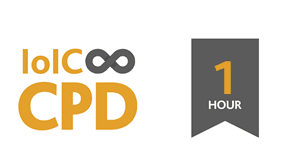
One of the fundamental challenges internal communicators face has always been reaching the hard to reach.
Whether it’s front-line employees on the road, in the warehouse or on the shop floor, or it’s a global workforce, divided by time zones and languages, getting the message out to everyone is never an easy task.
But what about now? As our audiences become more dispersed, and we compete against greater noise and distraction than ever before, has our job become that bit more difficult? And what can we do to overcome the barriers in our post-pandemic workplace?
Senior consultant Lisa Hawksworth, and senior writer and editor Jacey Lamerton were joined by our guests Janet Lessells, SGN and Alex Whittingham, Kuehne + Nagel to answer your questions on the topic. Scroll down to view the video or read the session write up.
Watch the session
Looking for a specific question? Here are the timestamps
00:00 Session outline
01:34 Introduction and background from our panellists
06:20 We take the term for granted but how are we actually defining ‘hard to reach’?
07:29 There’s been a huge push for major digital transformation and investment in organisations since lockdown. Is this 100% necessary in order to reach everyone?
16:55 We often talk about ‘hard to reach’ in terms of location or channels. What about in terms of mental state – all those people who may have become disengaged during this time. How can we make an impact there?
23:22 With information changing so fast week to week, how can we strike a good balance with our comms so that they continue to be helpful, rather than noisy and disengaging?
27:19 Do you think we have to focus on more "informal comms" to keep people engaged virtually?
34:02 What about those who just don’t want to be reached? Are they a lost cause?
37:12 I have seen a lot more access to senior management since lockdown, which is great. How do we ensure this is kept up?
The full session
We take the term for granted but how are we actually defining ‘hard to reach’?
LISA: Employees have always been ‘hard to reach’, particularly in worlds like Alex’s and Janet’s where employees have their hands full all day, or spend their time serving customers. Now, we have issues of accessibility from our desks at home. People are in more meetings than ever and lots of us have connectivity issues. As with all audiences, it’s not about bucketing them into one group, but rather thinking ‘who are our hard to reach people?’ and finding the differences between them. For example, looking at Alex’s world, there’s a big difference between someone operating a lorry and someone who’s packing the goods. What are their specific needs when it comes to communications?
There’s been a huge push for major digital transformation and investment in organisations since lockdown. Is this 100% necessary in order to reach everyone?
LISA: Tech isn’t always the answer because it can fail. A lot of digital and video solutions have really helped in this space but let’s not forget the importance of conversation, face-to-face time where possible, and print which can really help get cut-through.
ALEX: As internal communicators, we want to deliver the right message, through the right channel at the right time. But, certainly right now, we shouldn’t be embarrassed to do something that might not be seen as ‘creative’. Sometimes sending a letter to someone’s home address really is the best way. When you have an organisation with a wide range of ages across the generations, not every channel will be right for everybody. Some may feel more comfortable with traditional communications, others may prefer channels more akin to social media.
And in some organisations, we really have to work within the tools we have and realise there are limits to how creative we can be. Often IT infrastructure can limit the access some colleagues in operational roles will have to platforms such as the intranet. Whilst we might want to put things out digitally for speed, there isn’t always that option.
At Kuehne + Nagel, we’ve created an external microsite to which is accessible for all our employees to help keep everyone informed. To help launch it, alongside management cascades, we’ve used the traditional poster format with QR codes. Looking at the hits the site has had, it’s definitely cutting through the noise.
JACEY: We’ve seen this with one of our clients who had the same issues of accessibility at the start of lockdown. Such a secure network meant furloughed colleagues and people working from home couldn’t access information. They wanted to make sure everyone felt connected and part of one team, so they also created a microsite. It was a perfect example of right channel and the right time.
LISA: Alex made a great point about using different channels. The microsite was great, but using the other channels to point to it, and using shattered content to explore different angles and treatments really helps you reach as many people as possible, providing different ways to digest information based on preference. The poster, for example, grabbed people’s attention in the first place. It might be ‘traditional’, but it works.
JANET: At SGN we had some fortunate foresight about four years ago when we created our employee app. It’s can be used on any device so it’s available to and inclusive of everyone. During Covid, we’ve been able to point everyone to it as the ‘one source of truth’. It’s quick, accessible and very engaging, with CEO blogs, industry news and quizzes – all very digestible, based on feedback we received from employees about how they wanted to consume the content.
We often talk about ‘hard to reach’ in terms of location or channels. What about in terms of mental state – all those people who may have become disengaged during this time. How can we make an impact there?
JANET: We’ve been talking about this very recently. With people wanting to come back to the office and winter being a traditionally busy time in our business, ordinarily we’d have a winter readiness campaign, focussing on things like checking your vehicles and driving safely in adverse weather. I think this year, ‘winter readiness’ will be just as much about mental health, with advice around our state of mind and supporting employees through the winter months.
LISA: Our conversation so far has been about getting messages out, but a key part of getting to ‘hard to reach’ audiences is getting the message back and creating a feedback loop. As people return to the office, for example, we might hear a lot talk about how great it would be to work from home forever, but not everyone is really saying that. How are businesses listening?
ALEX: When lockdown was announced and people started going on furlough, one of the things we did straight away was gather people’s personal email addresses. We send a dedicated weekly newsletter to them and the content is much more around wellbeing. As part of that, we make sure they have the opportunity to feedback to us through surveys.
From a mental health perspective, there will be those who just don’t want to be engage at certain points. Personally speaking, I was furloughed for a few months and in that time I didn’t want to be communicated to. In the days leading up to returning, I felt anxious as if starting a new job. After embedding back into the team, I wanted to learn more. It was big real range of emotions in a short period of time. People are going to be going through many stages and we need to make sure when colleague return, we’re onboarding them in the right way, personally and professionally.
JACEY: Initially when lockdown happened, we saw a surge in operational comms but over time we’ve seen a reassuring increase in the amount of wellbeing focussed comms. It’s a lockdown silver lining I hope will continue.
With information changing so fast week to week, how can we strike a good balance with our comms so that they continue to be helpful, rather than noisy and disengaging?
JACEY: The onus is on us, as communication professionals, to get out of our ivory towers. Pulse surveys, sentiment tracking and the data they give us is of course important but so is getting out there and chatting to people. I’m a big champion of finding your comms allies – building relationships so that you can find out what’s really being said.
JANET: We’re doing work right now to refresh our comms champs group. It was always based on geographical locations but now that’s not so much an issue, we’re looking at increasing the representation of operational folks. We’re redefining their responsibilities to bring them more into the internal comms fold and get them involved in testing new transformation programmes so we can understand how they may be received.
ALEX: Through periods of change and uncertainty, if you think you’re communicating too much, it’s probably just the right amount. Obviously, we don’t want to overload people, so it’s about using that channels mix to best effect. A video may come across more informal and human than a scripted email announcement. People will pick and choose what they connect with most. Importantly, we need to measure, measure, measure. A recent survey of ours revealed people wanted more information. We thought we’d been swamping people.
Do you think we have to focus on more "informal comms" to keep people engaged virtually?
LISA: I think it depends on the audience and what they want. From recent work we’ve been doing, even before lockdown, authenticity is so important. Sometimes, when you’re creating a video, it’s harder to make it look rough and ready than it is to make it polished, but we know from our listening work that it’s the preference.
JANET: In trying to be as authentic as we can, we’re focussing on peer-to-peer communication. Where we might have had an executive giving the briefing, now we’re looking a lot at subject matter experts. That can be anyone from a depo admin colleague right through to the top.
JACEY: I do a lot of work on tone of voice. Not every piece of information needs to be shared, but when there’s something important, it’s about making sure it’s in a language that resonates. Again, it comes down to really understanding your audience. Informality, or telling stories in a new way, can break down a lot more boundaries.
ALEX: A lot of our informal comms come through our Recognition Scheme. We produce physical postcards which go out across all of our sites, so those operational team members who might not be online can also use them. It brings together the informal peer-to-peer recognition. Then, when we talk about recognition at a national scale, we run events where we invite people along for the day for fun activities that bring colleagues together with the leadership team. It helps break down barriers.
JACEY: There’s an element of risk too, when it comes to comms champions. It’s always interesting to know how much freedom, empowerment and training organisations give to their champions for them to communicate on their behalf, and how much the internal comms team controls that.
JANET: That’s right. We’re in a good place with that calculated risk. We made the decision when we launched our app to keep the comments on. We felt people should be able to ask anything and we are either able to answer it, or we’re not and we can give a reason why. It’s important to be open and transparent. We’re also looking at encouraging senior leaders to get involved in these conversations. So, it’s not just top down communication, it’s a conversation. It takes buy in, time and an understanding of just how important this is.
What about those who just don’t want to be reached? Are they a lost cause?
ALEX: No, I don‘t think so. As we touched upon. There’s a range of emotions we go through in a prolonged period of change. I think what’s so important is that we keep giving people the option to communicate and give feedback. To stop is to admit defeat, but you don’t know whether, if you had continued, you might have seen a change in their desire to engage. It’s important to just keep being there for your colleagues.
JANET: I’m very aware of this as we go towards the winter period and people may become more anxious, I think we need to keep reminding our line managers how important it is for them to keep having those conversations with their teams.
ALEX: We also need to appreciate that, just because you’re not hearing from a certain individual or team, doesn‘t mean they’re not there in the background. Our sales team had regular calls during lockdown. There are too many people for everyone to speak during the time but just because they don’t doesn’t mean they don’t find it helpful in making them feel part of the team.
I have seen a lot more access to senior management since lockdown, which is great. How do we ensure this is kept up?
LISA: That’s interesting. There’s been increasing requests for leadership visibility. We’ve had a taste for it in lockdown – the authenticity that comes from seeing leaders in a more informal setting. How do you sustain it? Pull together a leadership calendar that cements it and ask what form it should take. Walking around the office may not be the best way anymore. It may be more on demand virtual content.
JANET: I’m hoping post-lockdown, our leaders will travel a lot less from a sustainability point of view. It’s a leveller in ways because, where before they were based in one location and only available to a set number of colleagues at any given time, now we all have the same access. It’s going to be about building a good comms plan with activities to give them regular visibility.
ALEX: As communicators, we shouldn’t let ourselves off the hook. We’ve proved in this time that it’s possible create videos quickly. It doesn’t have to be polished. It’ll drop off leaders lists so we need to be planning, putting dates in their diary, even writing a draft script in the first instance to help guide them. It’s up to us to keep pushing the agenda.
When line managers are so critical for remote workers... do we invest enough in line manager comms skills and confidence?
LISA: Everyone will be different but I think manager have two responsibilities. Managing remotely and leading remotely. – They’re two very different things. As a line manager you’re a channel in and a channel out so it’s about looking at the many responsibilities managers have and understanding how best to support them.
JANET: It’s a big issue. We’re working right now to refresh our Team Talk – line manager briefings to employees, and looking at making sure that reflects the remote working format, as well as ways to best support their communications efforts






